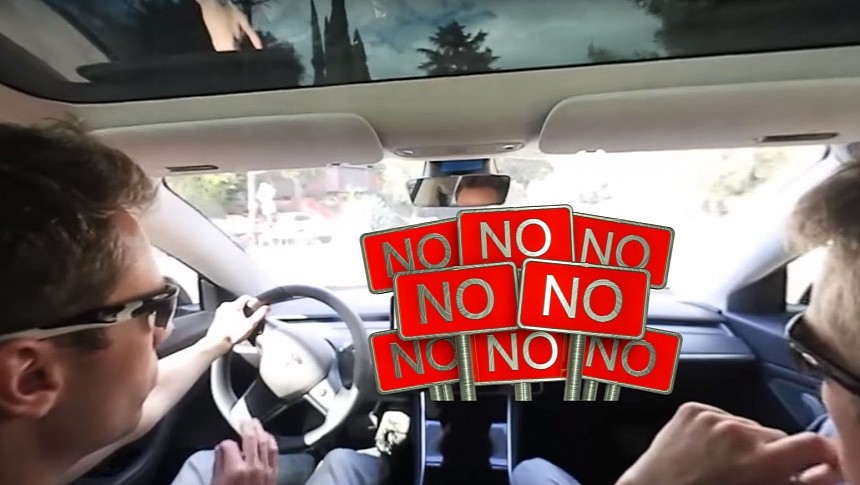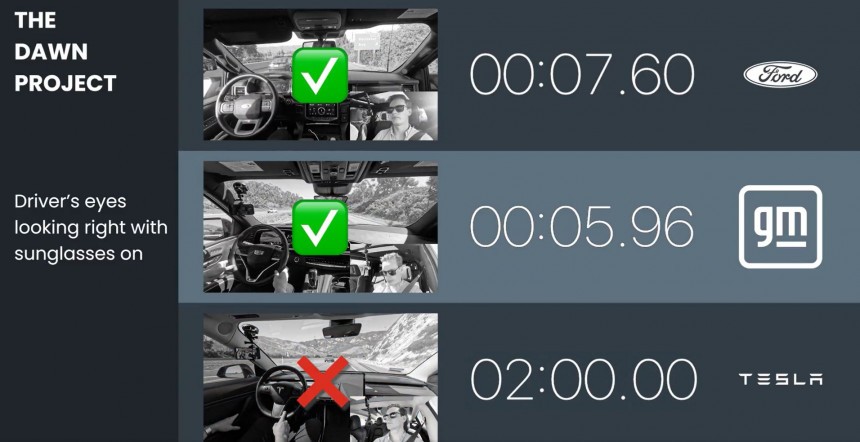Automakers are racing to automate driving for reasons that are unclear yet. However, the journey to real autonomous cars is nowhere near the finish line. Cruise proved robotaxis are still in their infancy, and established auto brands like Mercedes-Benz showed that you can't really take advantage of great self-driving systems unless a bunch of very specific conditions are met. But developing these very advanced suites could be even more rudimentary than we were led to believe.
Believe it or not, the US and the EU introduced legislation last year that forced automakers to install driver monitoring systems in newer cars. Fortunately, the regulations aren't about pointing a camera at your face 24/7 but are meant to analyze your driving behavior and suggest a brake when the system might find that you're not as attentive as when you started driving.
Being tired behind the wheel can sometimes be as dangerous as being under the influence. Drowsiness isn't something that serious drivers joke about. You, too, could fall asleep behind the wheel, no matter how good you think you are.
But automakers don't just care about telling you when to take a short break. If they put these sensors in your cabin, they might as well use them for more than one mandated thing. Enter advanced driver-assistance systems (ADAS) – one of the stops before cars become autonomous.
Carmakers shouldn't have to think about implementing systems that watch your move while behind the steering wheel if they truly believe that the advanced safety and assistance solutions they offer are great.
Sadly, they're not. That's why they need systems in place that can determine if you're attentive. Driving while following all the rules of the road and remaining courteous to other traffic participants is a lot more complicated than some would have you believe.
But with these assistance systems, driving on the highway becomes just a little more bearable. Ford and General Motors, for example, have a hands-off, eyes-on type of thing going on for them. Tesla is doing its own stuff with the Full Self-Driving suite, while the Germans are trying to make SAE Level 3 ADAS a thing.
However, some are better at this game than others. Even though Tesla is publicly perceived as the one auto brand that puts almost all its weight behind driving automation, it's not doing very well in this department. The brand's CEO publicly demoed the out-of-beta FSD V12, and the Model S tried to run a red light during the livestream.
Thus, it still needs some refining and brings into question the discussion revolving around the supporting hardware implementation. Hardware 3 and Hardware 4 might not be enough for cars to obtain real self-driving capabilities, and waiting for Hardware 5 might allow competitors to take the spotlight.
But Tesla might have even more pressing matters to deal with first. A new test published by the Dawn Project shows that the now Texas-based EV maker can't even get the driver monitoring system to work correctly. It failed or was slow to detect what the person behind the wheel was doing in all nine comparison stages. Meanwhile, Ford's and GM's systems worked as expected even when the driver wore sunglasses or an eye mask.
But that's not something Tesla cannot fix. The brand is well-known for delivering all sorts of over-the-air updates.
However, it proves that other independent rankings are right to put FSD Beta at the bottom of the barrel. It's nowhere near as good as what legacy automakers are bringing to the table, and that raises questions about the CEO's promises regarding turning Tesla's EVs into robotaxis that can bring customers some extra revenue.
Finally, it's also important to keep in mind that the Dawn Project is mainly supported by Dan O'Dowd, a known Elon Musk antagonist and Tesla detractor. At the same time, the world's most valuable automaker is constantly investing in improving its offerings. So, expect such shortcomings to be fixed as newer models are brought forward.
Being tired behind the wheel can sometimes be as dangerous as being under the influence. Drowsiness isn't something that serious drivers joke about. You, too, could fall asleep behind the wheel, no matter how good you think you are.
But automakers don't just care about telling you when to take a short break. If they put these sensors in your cabin, they might as well use them for more than one mandated thing. Enter advanced driver-assistance systems (ADAS) – one of the stops before cars become autonomous.
Carmakers shouldn't have to think about implementing systems that watch your move while behind the steering wheel if they truly believe that the advanced safety and assistance solutions they offer are great.
Sadly, they're not. That's why they need systems in place that can determine if you're attentive. Driving while following all the rules of the road and remaining courteous to other traffic participants is a lot more complicated than some would have you believe.
But with these assistance systems, driving on the highway becomes just a little more bearable. Ford and General Motors, for example, have a hands-off, eyes-on type of thing going on for them. Tesla is doing its own stuff with the Full Self-Driving suite, while the Germans are trying to make SAE Level 3 ADAS a thing.
However, some are better at this game than others. Even though Tesla is publicly perceived as the one auto brand that puts almost all its weight behind driving automation, it's not doing very well in this department. The brand's CEO publicly demoed the out-of-beta FSD V12, and the Model S tried to run a red light during the livestream.
Thus, it still needs some refining and brings into question the discussion revolving around the supporting hardware implementation. Hardware 3 and Hardware 4 might not be enough for cars to obtain real self-driving capabilities, and waiting for Hardware 5 might allow competitors to take the spotlight.
But that's not something Tesla cannot fix. The brand is well-known for delivering all sorts of over-the-air updates.
However, it proves that other independent rankings are right to put FSD Beta at the bottom of the barrel. It's nowhere near as good as what legacy automakers are bringing to the table, and that raises questions about the CEO's promises regarding turning Tesla's EVs into robotaxis that can bring customers some extra revenue.
Finally, it's also important to keep in mind that the Dawn Project is mainly supported by Dan O'Dowd, a known Elon Musk antagonist and Tesla detractor. At the same time, the world's most valuable automaker is constantly investing in improving its offerings. So, expect such shortcomings to be fixed as newer models are brought forward.
Watch The Dawn Project’s latest safety tests of @Tesla’s driver monitoring system, which reveals that it frequently fails to register the presence of a distracted driver, and performs much worse than GM and Ford’s driver monitoring systems. See the full video below. pic.twitter.com/fELvP5vDW1
— Dan O'Dowd (@RealDanODowd) November 15, 2023











